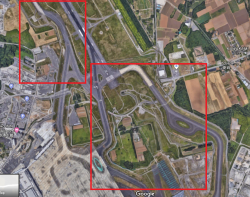jb747
Enthusiast
- Joined
- Mar 9, 2010
- Posts
- 13,491
The runway numbering system is simply the magnetic heading of the runway, divided by 10. The upshot of that is that as the magnetic field varies over the years, some runways actually have a change of name, whilst others may drift away from what would be the correct title. To reduce confusion, the numbers can also be arbitrary changed. LAX is an example of this, where 24L/R are the same track as 25 L/R.
Confusion can exist any time there is a choice. It pretty much doesn't matter what that choice is. If you see a runway, and get it into your head that that is the one you want, then I expect that some people won't be swayed by any amount of reason or sense. Wrong numbers...wrong direction, mixing left and right, or runway for taxiway. All of these errors have been made innumerable times. I've even heard of wrong aircraft carrier. Wrong airport isn't unknown either.
In the tape the flight crew just sound appalling. They manage to confuse ATC, whose calls are generally a sensible attempt to fix the mess being made by the flight crew.
Confusion can exist any time there is a choice. It pretty much doesn't matter what that choice is. If you see a runway, and get it into your head that that is the one you want, then I expect that some people won't be swayed by any amount of reason or sense. Wrong numbers...wrong direction, mixing left and right, or runway for taxiway. All of these errors have been made innumerable times. I've even heard of wrong aircraft carrier. Wrong airport isn't unknown either.
In the tape the flight crew just sound appalling. They manage to confuse ATC, whose calls are generally a sensible attempt to fix the mess being made by the flight crew.















